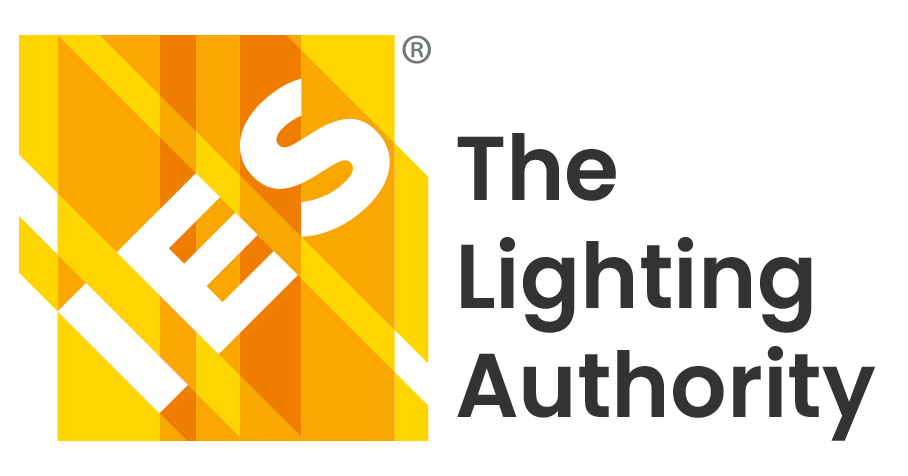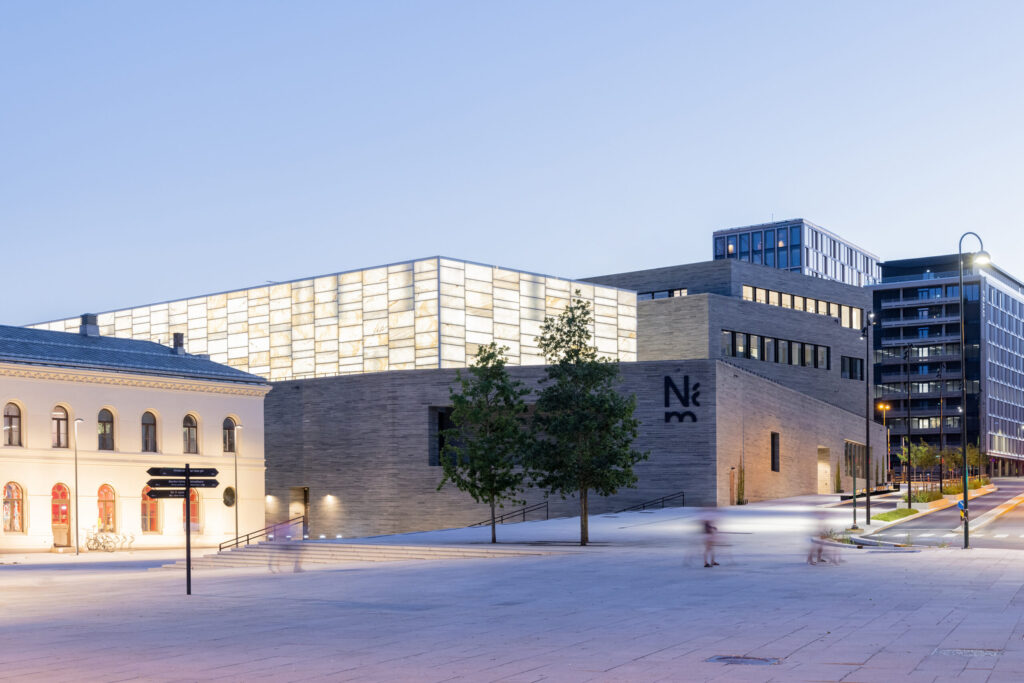Luminaires are in constant motion at the National Museum in Oslo
The definition of “flexible lighting” is typically pretty flexible. Track-mounted fixtures that can be re-aimed, tunable CCT and “future-proof” luminaires that can easily be switched out all fall into the flexible lighting bucket. Now, the design team for The National Museum in Oslo has taken “flexible lighting” to a new level through the use of a trolley system that allows lights to be transported and pre-programmed as exhibits change.
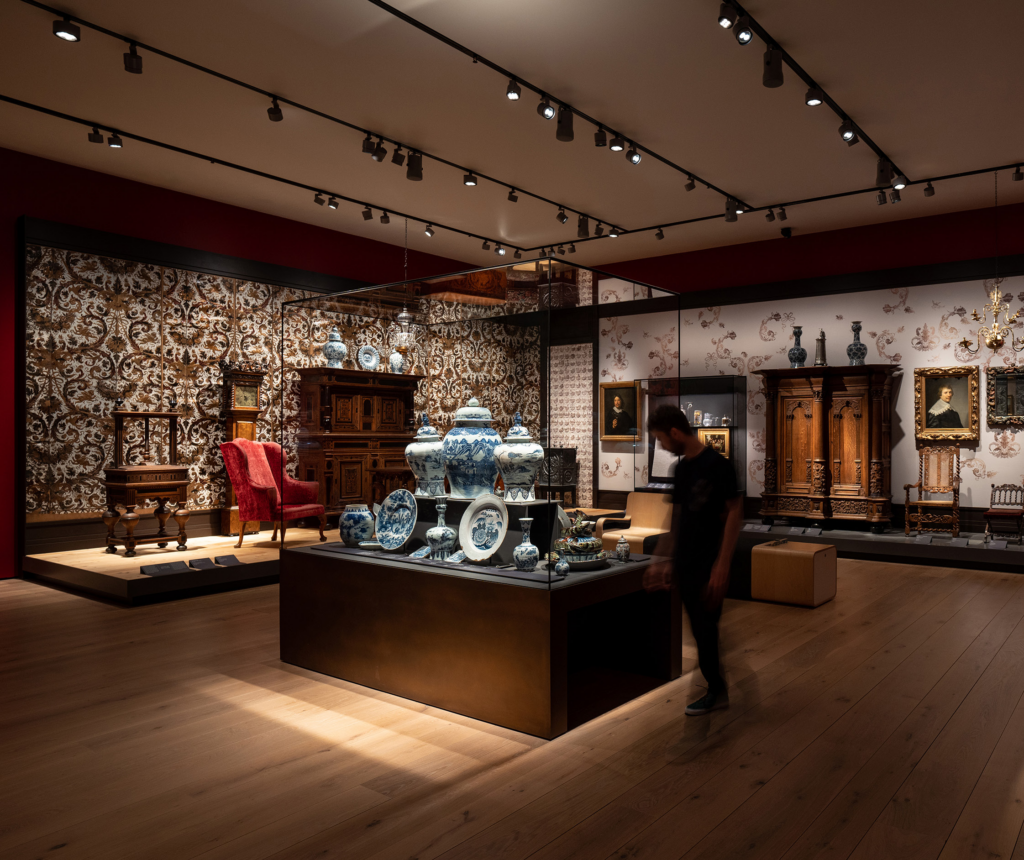
That type of precision is critical at the mammoth 54,600-sq meter building that unites four previously dispersed art museums under a single roof. Part of Oslo’s waterfront renewal, the museum is located on the site of the city’s former west railway station. With lead architect Kleihues + Schuwerk at the helm, the new facility—with its granite façade crowned by a shimmering “light hall”—preserves and presents Norway’s sweeping cultural heritage. On display are more than 100,000 objects ranging from Edvard Munch’s The Scream to the royal robes worn by Norwegian queens. Exhibit designer Guicciardini & Magni teamed with lighting designer Massimo Iarussi, (both based in Florence, Italy) to develop the concept for the exhibition space (90 halls in total, measuring 13,000 sq meters).
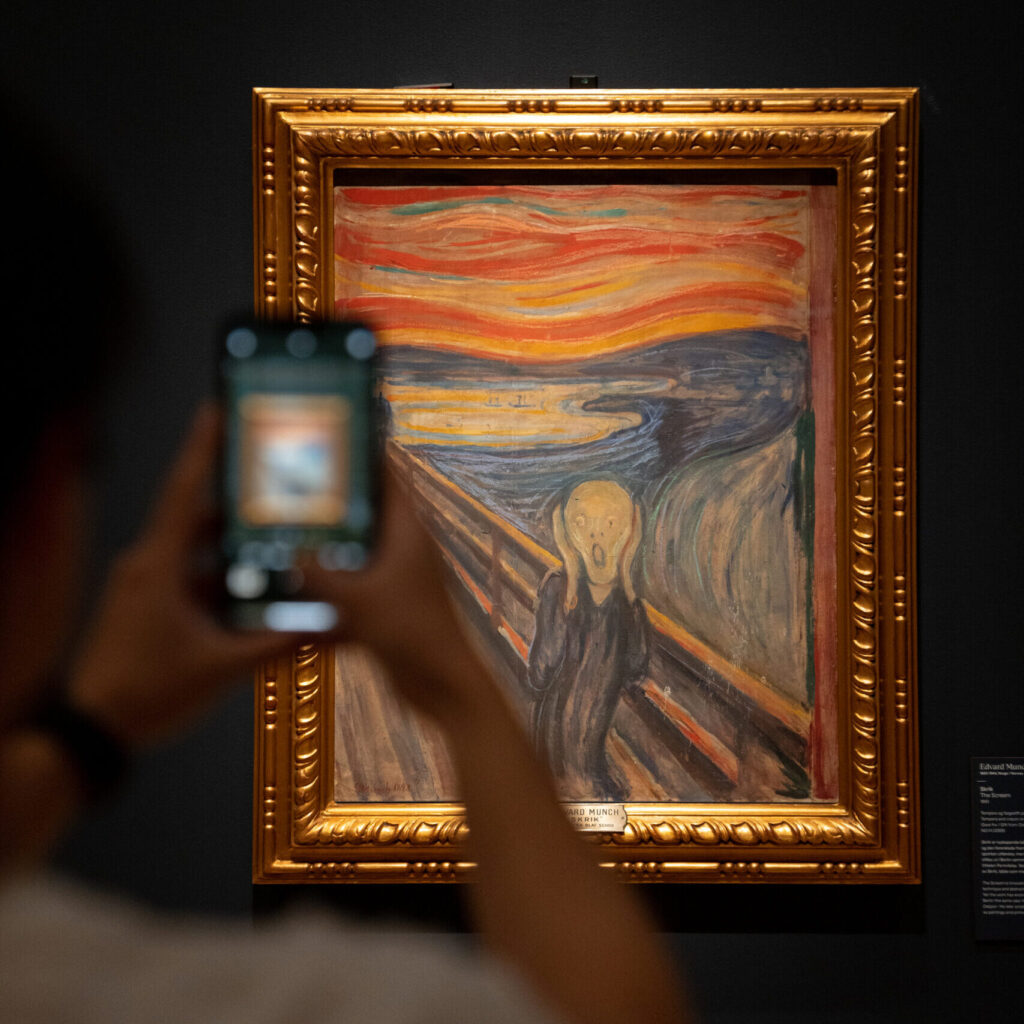
The museum’s project team was keenly aware of the interplay of exhibit space and design. “Initially there was the ‘exhibition concept.’ Together with the architects we asked ourselves how we could translate the idea into a ‘building-and-space concept,’ ” says the museum’s project director Jon Geir Placht. Adds Britt Guleng Mai, senior curator at the museum, “With lighting design, it is possible to create certain narratives and trigger emotions in the observer; it is essential to give meaning to art.”
Lighting designer Iarussi’s mission was to craft a concept that would do justice to the enormous range of themes, exhibits and media. “The light merges with the exhibition and guides visitors through the museum. Our aim was to give them acalm, pleasant experience despite the sheer size and quantity of art,” explains Iarussi. “[Variety] typifies both the exhibition concept and the lighting concept. Through the art, the materials and the lighting, each room is different from the others.”
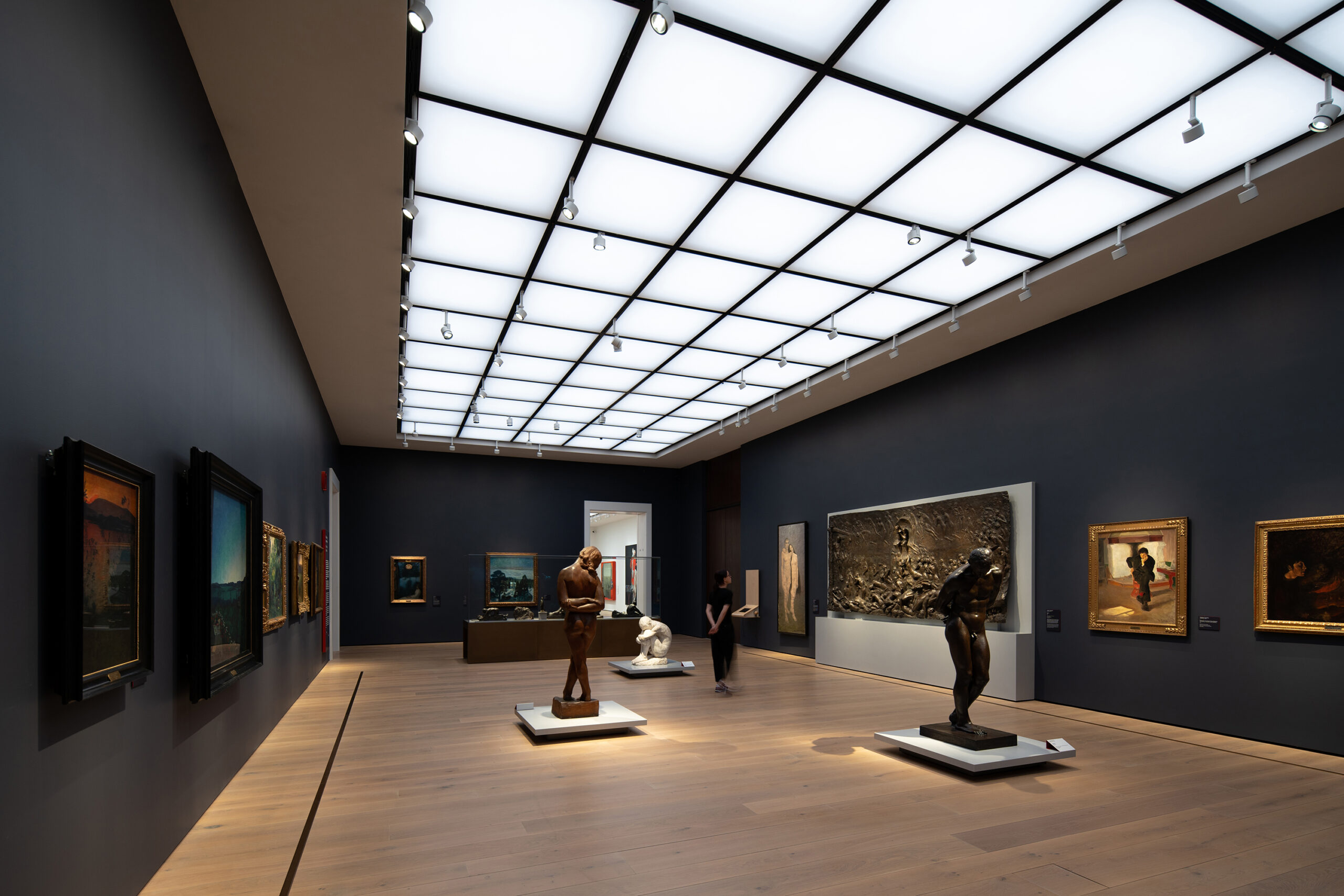
The hall’s ceiling grid is comprised of track and square light ceiling modules that create the impression of a classic hall of skylights. Depending on the desired atmosphere in the hall, spotlights and wall washers are able to highlight individual exhibits almost imperceptibly from the dominant general brightness, or carve them out of the darkness with powerful accents. “The light is a metaphor for journeying through time. The exhibi tion design depicts a chronology that symbolically emphasizes the lighting. In the rooms displaying art from antiquity, we worked with strong contrasts. Light is very focused on the works to give them more plasticity and presence,” Iarussi explains. As one approaches more contemporary works, “the lighting becomes increasingly ‘democratic,’ less concentrated and more diffuse. After all, art has been accessible to everyone, to the entire population, since the modern era. The diffuse light symbolizes this complete access to art.”
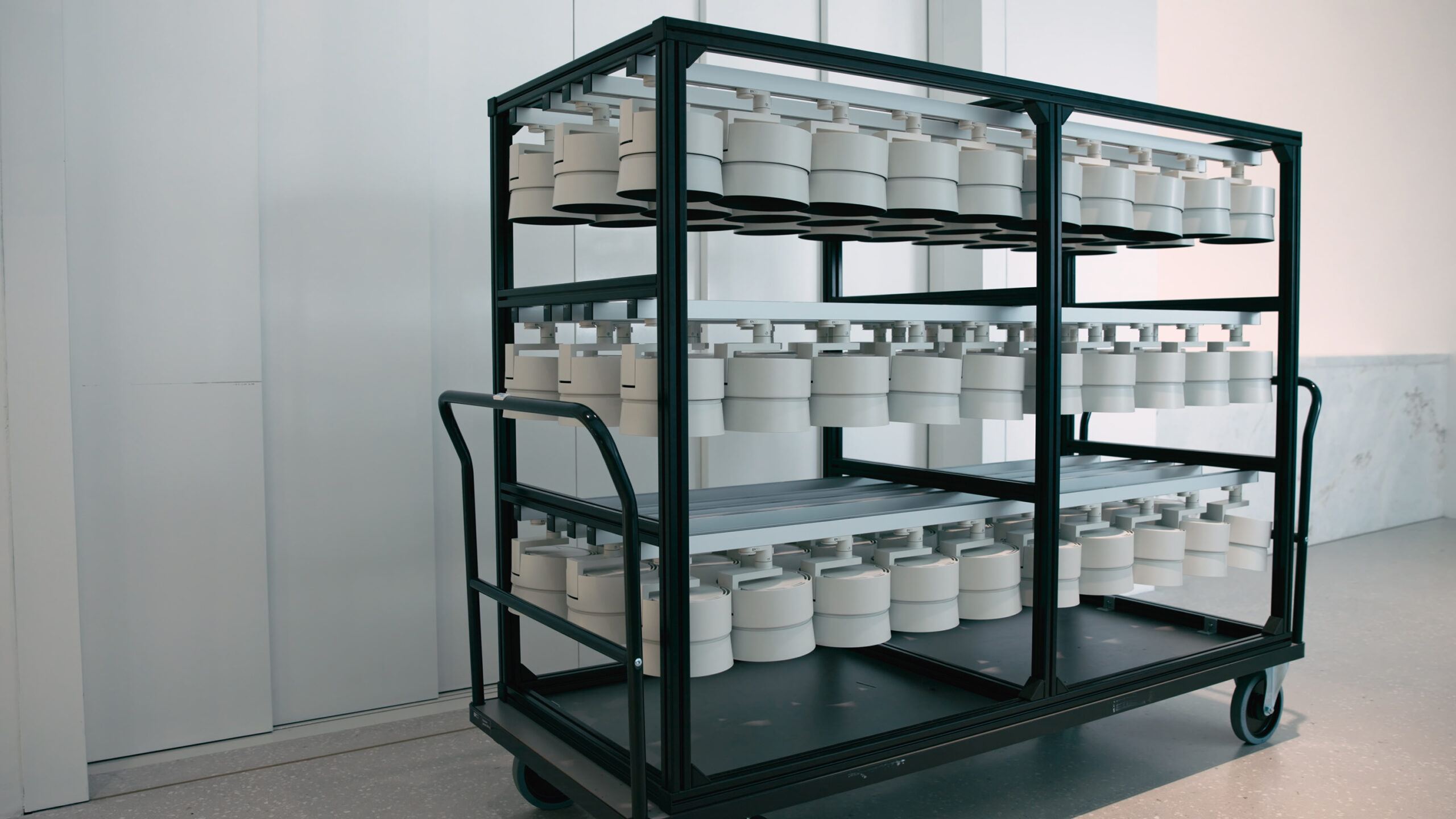
This lighting in the exhibit space entails approximately 5,700 LED spotlights and floodlights from the ERCO Parscan family. The track-mounted spotlight system (CRI of 97-plus) offers tool-free interchangeable lenses for different light distributions. The minimalist spotlight design weaves a thread throughout the entire museum, says Iarussi. “The [system] enabled the widest variance, for example with color temperature, which can differ from room to room, and through different light distributions. For the high-contrast displays we used narrow-spot distribution in dark surroundings. This required maximum-precision optics that project precise beams of light without any light spill.”
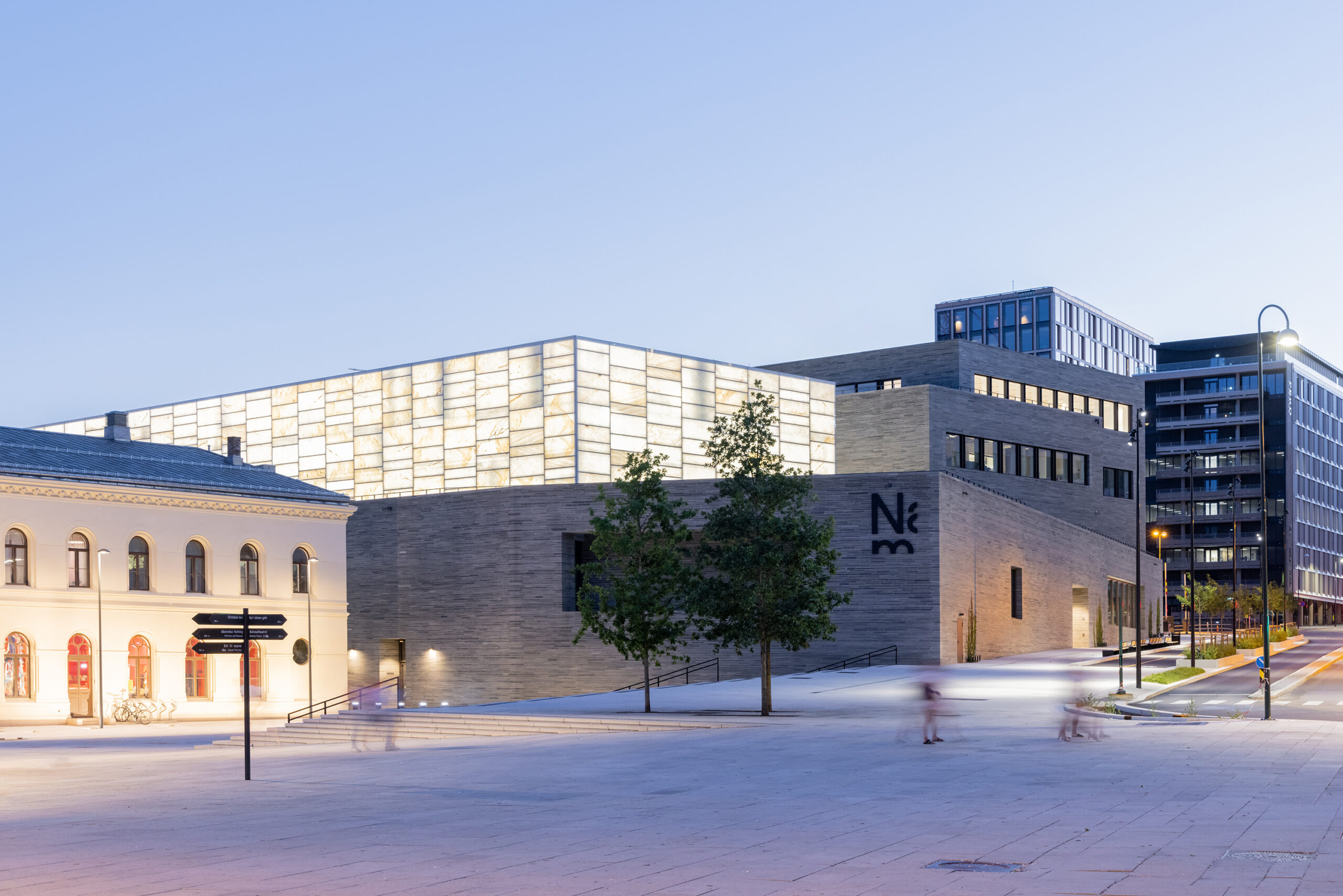
The most innovative aspect of the project, however, might be how the lights are moved around the building. ERCO devised a logistics solution featuring custom trolleys used to transport and install the thousands of luminaires in the different halls. The spotlights for a particular room can be stocked on a trolley’s 15-track segments, arranged like a shelf, and rolled conveniently through the museum. A textile covering protects against dust from construction operations. Because the track is electrified, work such as DALI addressing of the spotlights can be done on-site on the floor. “The trolleys mean we can transport a variety of luminaires more easily in the new National Museum, cover long distances quicker and also program them directly. The trolleys make daily work more efficient and also help in preparing for future exhibitions,” explains exhibition technician Magnus Mikaelsen. After the initial installation phase, the trolleys now serve as compact storage modules for the museum’s pool of lighting used for temporary exhibitions
THE DESIGNERS
- Klaus Schuwerk is principal of architect Kleihues + Schuwerk.
- Massimo Iarussi is a lighting designer based in Florence, Italy.
